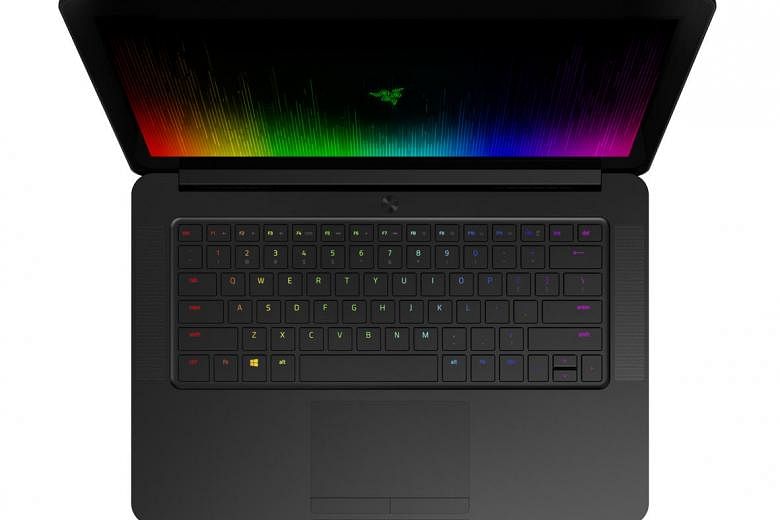The new Razer Blade is as sleek as last year's model. With its lid closed, it resembles a slab of black aluminium. It is like the cool dude among the bevy of flashy gaming laptops competing for your attention.
Its understated design invites comparisons with the Apple MacBook Pro, though the Blade has the gaming chops (and the ports) that the MacBook lacks.
The new version is a smidgen more capable than its predecessor with an upgraded Intel seventh-generation Kaby Lake processor. But it retains the Nvidia GeForce GTX 1060 graphics chip, which is good enough to run most games.
In Doom, the Blade produced 101 frames per second (fps) at Ultra setting at its native 1,920 x 1,080-pixel resolution. In Crysis 3, the Blade scored 62fps at Very High setting. These figures are on a par with other GTX 1060-powered gaming laptops.
-
TECH SPECS
-
PRICE: $2,899
PROCESSOR: Intel Core i7-7700HQ (2.8GHz)
GRAPHICS: Nvidia GeForce GTX 1060 6GB GDDR5
RAM: 16GB DDR4
SCREEN SIZE: 14 inches, 1,920 x 1,080 pixels
CONNECTIVITY: 3 x USB 3.0, Thunderbolt 3 (USB Type-C), HDMI, audio jack
BATTERY: 70 watt-hour
-
RATINGS
FEATURES: 4
DESIGN: 4
PERFORMANCE: 4
VALUE FOR MONEY: 3
BATTERY LIFE: 2
OVERALL: 4
The Blade's 14-inch screen is slightly smaller than the 15-inch gaming laptops in the market. While the size probably helps Razer keep the Blade's weight to around 1.9kg, it also means that the screen feels a bit more cramped. The bezel also could be slimmer.
Viewing angles are great on its matte IPS screen, but the colours look more saturated than I would have liked. My review set has a 1,920 x 1,080-pixel screen resolution, though Razer plans to offer a 4K touch display soon.
Its Chroma keyboard offers customisable backlighting along with a bunch of lighting effects like breathing and wave. You can select the backlight colour for each individual key from 16.8 million colours. However, I am not a fan of Razer's Synapse software, which requires me to create and log into an account, just to tweak the keyboard settings such as the backlighting, and to create custom macros. While I understand the convenience of having your gaming profiles stored in the cloud by Synapse, I feel it should be optional rather than mandatory.
The keyboard has an anti-ghosting feature that registers all your key presses, even if you hit multiple keys at the same time. Key travel is decent for a laptop.
I did not like the touchpad buttons, which are thin slivers near the edge of the laptop. A buttonless clickable touchpad would have been better, though gamers would probably use a gaming mouse most of the time.
With speakers at both sides of the keyboard, the Blade is loud and clear. This is important because the laptop's fans get really noisy when running a game. Despite the fans working overtime, the Blade still gets uncomfortably warm, so I would not advise placing it on your lap.
My Blade review set is priced at $2,899 with a 256GB solid-state drive. Its rivals in the slim gaming laptop category include the more expensive Aorus X3 Plus ($3,599), a 13.9-inch model with a 3,200 x 1,800-pixel screen; and the Gigabyte Aero 14 ($2,699), which has a 2,560 x 1,440-pixel display. All these laptops have similar hardware, such as the GTX 1060 graphics chip.
- Verdict: Razer's sleek gaming notebook is good-looking and capable of running the latest games.



